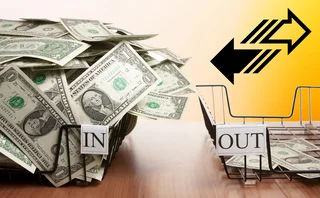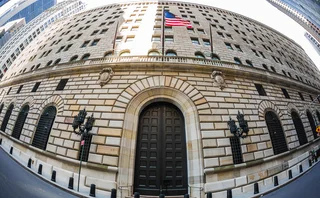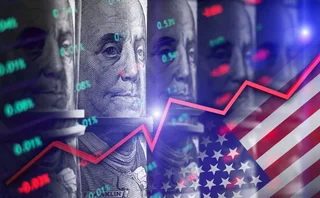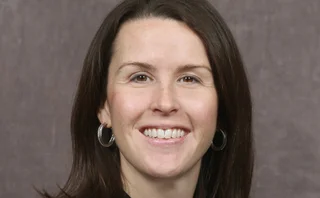
Why the US election fallout was not a surprise to banks

There is anecdote in Michael Lewis’s bestseller, The Big Short, that makes the case for stress-testing as a backstop to risk modelling more effectively than any regulatory dictum could.
Lewis is describing Morgan Stanley’s massive bets on subprime mortgage bonds in the run-up to the US housing market collapse of 2007, which – after lucrative early successes – were being run from a specially formed unit led by bond trader Howie Hubler.
Hubler’s positions in collateralised debt obligations were stress-tested for losses on subprime pools reaching 6% – the highest in recent history – and still showed a healthy profit. Morgan Stanley’s then-chief risk officer, Tom Daula, asked what would happen if losses hit 10%. Lewis documents the reaction of Hubler and his traders: “It was more than a little weird,” said one of them. “There was a lot of angst about it. It was sort of viewed as: ‘These folks don’t know what they’re talking about. If losses go to 10%, there will be, like, a million homeless people.’” (Losses in the pools Hubler’s group had bet on would eventually reach 40%.)
As a senior Morgan Stanley executive outside Hubler’s group put it: “They didn’t want to show you the results. They kept saying: ‘That state of the world can’t happen.’”
Fast-forward to today, and traders seem more willing to ask ‘What if?’
As Lewis’s bemused executive had it, plenty of people had thought the current state of the world – a contested US presidential election in the middle of a pandemic that has killed millions and wrecked the global economy – couldn’t happen, either. Traders could have been forgiven for dismissing the scenario of an election result – which the incumbent has blamed on millions of fraudulent votes – looking set to remain unclear for days, if not weeks.
But, clearly, many did hypothesise such a situation – which might go some way to explaining why market reaction in the immediate aftermath has been muted to the point of being “eerily quiet”, as one trader has described it.
“This scenario was not out of the realm of possibilities. People were considering it, and would have priced in something that looked like this,” says a senior risk manager at a US bank.
“They might’ve assigned a lower probability to it, but it’s not taking them by complete surprise.”
At its crudest, stress-testing forces firms to look at their risk drivers, scratch their heads, and talk to their traders and portfolio managers about whether they’d still be comfortable with their exposures if a given situation came to pass.
As the risk manager sees it: “After 2016, people learned not to take the most obvious outcome as a given, and to plan for chaos. Every firm should have planned and strategised around these outcomes. Banks will have a playbook they can follow for what is likely beyond this point.”
Of course, like any risk measure, stress tests can be gamed – and, as in the unfortunate case of Morgan Stanley’s credit teams, their outputs ignored. But, even if a given outcome is unexpected, banks shouldn’t be unprepared.
Only users who have a paid subscription or are part of a corporate subscription are able to print or copy content.
To access these options, along with all other subscription benefits, please contact info@risk.net or view our subscription options here: http://subscriptions.risk.net/subscribe
You are currently unable to print this content. Please contact info@risk.net to find out more.
You are currently unable to copy this content. Please contact info@risk.net to find out more.
Copyright Infopro Digital Limited. All rights reserved.
As outlined in our terms and conditions, https://www.infopro-digital.com/terms-and-conditions/subscriptions/ (point 2.4), printing is limited to a single copy.
If you would like to purchase additional rights please email info@risk.net
Copyright Infopro Digital Limited. All rights reserved.
You may share this content using our article tools. As outlined in our terms and conditions, https://www.infopro-digital.com/terms-and-conditions/subscriptions/ (clause 2.4), an Authorised User may only make one copy of the materials for their own personal use. You must also comply with the restrictions in clause 2.5.
If you would like to purchase additional rights please email info@risk.net
More on Risk management
Credit risk transfer, with a derivatives twist
Dealers angle to revive market that enables them to offload counterparty exposures, freeing up capital
Op Risk Benchmarking 2024: the banks
As threats grow and regulators bore down, focus shifts to the first line
Fed stress-testing operational readiness of discount window
Experts say consultation on improved ops should be accompanied by focus on willingness to borrow
Millennium risk manager defends leverage in basis trade
“Gross notional measures don’t equate to market risk,” says Scott Rofey
Banks feel regulatory heat on op resilience
Op Risk Benchmarking: supervisors dial up reporting expectations and on-site inspections
BofA’s rates revamp leans into multi-strategy boom
New rates head Laura Chepucavage prioritises collateral efficiency, e-trading and central risk book for enlarged rates, futures and financing unit
Revolutionising credit surveillance: part two
Does GenAI live up to the hype? How prioritising AI and digitisation projects reveals data as the power behind AI initiatives
Elevating risk management to a strategic partner in investment decision-making
How risk management is evolving from a compliance role to a strategic partner, highlighting such themes as collaboration with portfolio teams, forward-looking approaches, advanced analytics and integrating emerging risks, enabling firms to navigate…








